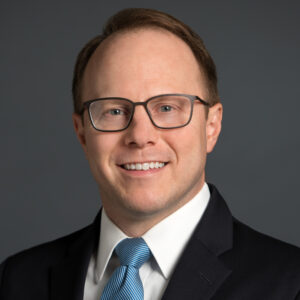The PIOGA Press
(by Lisa M. Bruderly and Gary E. Steinbauer)
Recent developments regarding two facets of Clean Water Act (CWA) regulation could affect natural gas pipeline siting/permitting and exploration and production activities in Pennsylvania and elsewhere. The first issue is the ongoing challenge to define “waters of the United States,” with the definition recently changing in Pennsylvania. The second issue is the concept of Clean Water Act liability extending to releases to ground water that eventually make their way to surface water (known as the “conduit” theory of liability).
Definition of “water of the United States”
It is widely known that in 2015 the Obama administration promulgated a new definition of the term “water of the United States” (WOTUS) in a rule commonly referred to as the Clean Water Rule (CWR). Industry and states promptly filed lawsuits challenging the CWR as an unlawful expansion of the types of waters subject to regulation under the CWA. Among other issues, the expanded definition increased the types of waters that were subject to U.S. Army Corps of Engineers and Environmental Protection Agency (EPA) jurisdiction. With the increased scope of federal jurisdiction, a pipeline project or exploration and production activities could impact a larger quantity of waters that were now considered to be regulated and require more complicated, costly and time-consuming permitting under Section 404 of the CWA. In some instances, a project could not be permitted due to the extent of impacts.
Almost immediately after the CWR was issued, lawsuits challenged it. Until 2018, the CWR was stayed (i.e., suspended) throughout the United States based on a nationwide injunction issued by the Sixth Circuit Court of Appeals. The nationwide judicial stay was lifted following a decision by the U.S. Supreme Court on January 22, 2018, which invalidated the Sixth Circuit’s nationwide injunction, holding that the federal trial courts, rather than federal appellate courts, had original jurisdiction to hear the lawsuits challenging the CWR. Nat’l Ass’n of Mfrs. v. DOD, 138 S. Ct. 617 (2018). As a result of the Supreme Court’s decision, the CWR remained stayed in 13 states based upon a previous injunction issued by a federal district court judge, but was expected to come into effect in the remainder of the country when the Sixth Circuit vacated its preliminary injunction. To delay the implementation of the CWR, EPA and the Corps finalized a rule adding a CWR applicability date of February 6, 2020. This so-called “Suspension Rule” was intended to give the agencies time to reconsider the CWR and again re-define WOTUS, as they had been directed to do by Executive Order 13778 issued by President Donald Trump in February 2017.
The Suspension Rule remained in effect, and the CWR remained stayed nationwide, throughout much of 2018, until, on August 16 a South Carolina district court overturned it on procedural grounds and imposed a nationwide injunction on the Suspension Rule. See S.C. Coastal Conserv. League v. Pruitt, 318 F. Supp. 3d 959 (D.S.C. 2018).
Following the South Carolina district court’s decision, other federal district courts subsequently enjoined the CWR in various states. As of October 31, the CWR (and the 2015 definition of WOTUS, is in effect in 22 states, including Pennsylvania, Ohio, New York, Maryland, New Jersey and the New England states. In contrast, the Corps’ and EPA’s 1986 and 1988 regulations and related guidance will continue to define the scope of federal jurisdiction for now in the remaining 28 states.
For now, and unless the South Carolina district court’s decision is overturned or temporarily stayed, the state-dependent definition of WOTUS could have significant and immediate permitting, compliance, and enforcement implications for natural gas production, processing and pipeline projects.
Within states like Pennsylvania, where the CWR currently is in effect, developers may be faced with more complicated, lengthy and expensive CWA Section 404 permitting actions and mitigation obligations. In instances where delineations have been competed but permits have not been issued, the change in regulatory definition may result in additional site evaluations or application revisions or both. In addition, interstate projects will require state-specific consideration of the different definitions of WOTUS, realizing that certain streams and wetlands may be regulated as WOTUS in one state but not in a neighboring state.
Against this backdrop of an inconsistent regulatory patchwork where the scope of the CWA varies by state, the agencies are pressing forward with their plans to repeal the CWR and potentially redefine WOTUS. The anticipated timetable for the agencies to repeal the CWR and recodify the pre-2015 regulatory definition of WOTUS is late 2018. Concurrently, the agencies have been developing a separate rule which would redefine WOTUS and have indicated that this rule will be proposed in March 2019, a four-month delay from previously announced plans.
Groundwater conduit theory
Another recent development involves the potential expansion of CWA liability for pollutants entering groundwater. In 2018, three federal appellate courts issued conflicting decisions in five separate citizen suits alleging that CWA liability extends to discharges of pollutants that reach WOTUS via hydrologically connected groundwater. The basic yet fundamental question in each of these, and several other pending district court cases, is whether CWA liability can be asserted when a “point source” discharge travels through groundwater, serving as a “conduit,” before ultimately reaching a jurisdictional surface water.
Under the current legal landscape, the Fourth and Ninth Circuits have ruled that CWA liability extends to such discharges. The tests for liability in the two courts differ, with the Fourth Circuit adopting the “direct hydrological connection” test and the Ninth Circuit adopting the “fairly traceable” test. On the other hand, the Sixth Circuit has rejected the “direct hydrological connection” rationale and ruled that the groundwater “conduit” theory is inconsistent with the plain language of the CWA. The courts have also examined the meaning of “point source,” defined under the CWA as a “discernible, confined, and discrete conveyance” 33 U.S.C. § 1362(14). Pennsylvania is located in the Third Circuit, which has not, yet, issued any opinions directly addressing the “conduit” theory.
With varying results and areas of focus, the “conduit” theory of CWA liability recently has been raised in citizen suits by environmental groups in a variety of different contexts, including the following:
- The Ninth Circuit found that separately permitted wastewater injection wells with a dye-tracer confirmed hydrological connection (through lava tubes) to the Pacific Ocean are regulated under the CWA. Hawai’i Wildlife Fund v. County of Maui, 886 F.3d 737 (9th Cir. 2018).
- The Fourth Circuit found that allegedly ongoing contamination seeping through groundwater from a previously repaired gasoline pipeline rupture is regulated under the CWA. Upstate Forever v. Kinder Morgan Energy Partners, 887 F.3d 637 (4th Cir. 2018).
- The Fourth Circuit also found that coal ash settling ponds and landfills are not “point sources” or “discernible, confined, and discrete conveyances” and therefore are not regulated under the CWA. Sierra Club v. Virginia Electric Power Co., 903 F.3d 403 (4th Cir. 2018).
- The Sixth Circuit found that seepage of pollutants from coal ash ponds/impoundments that migrated through karst topography to nearby surface water is not regulated by the CWA. Kentucky Waterways Alliance v. Kentucky Utilities Co., 905 F.3d 925 (6th Cir. 2018); Tennessee Clean Water Network v. Tennessee Valley Auth., 905 F.3d 436 (6th Cir. 2018).
Similar to the existing legal landscape regarding the definition of WOTUS, the conflicting decisions of the Fourth, Sixth, and Ninth Circuits over the viability of the groundwater “conduit” theory result in an arguably broader scope for CWA liability in the 14 states and two territories within the Fourth and Ninth Circuits and a narrower scope of CWA liability in the four states within the Sixth Circuit. The clear split among these circuits on the scope of CWA liability increases the likelihood that the Supreme Court will weigh in on this important issue. In fact, the defendants in the Upstate Forever v. Kinder Morgan and Hawai’i Wildlife Fund v. County of Maui matters have already filed petitions for a writ of certiorari seeking Supreme Court review.
Natural gas, oil and other hazardous liquid pipeline operators could be specifically affected by the “conduit” theory decisions, as evident by the ruling in Upstate Forever v. Kinder Morgan. The Upstate Forever decision has the potential to significantly expand the scope of the CWA to cover a wide range of unplanned and unintentional discharges that reach surface waters through complex underground pathways. Furthermore, allowing CWA citizen suits to continue after the source of the discharge has been stopped increases exposure for entities that have taken actions to correct a leak or to address residual groundwater contamination through remediation.
Notwithstanding the differences in opinion among these federal appellate courts, as a result of the Sixth Circuit decisions regulated parties in CWA lawsuits now have recent persuasive precedent to rely upon when facing allegations of an unauthorized discharge under the CWA from ponds, impoundments, lagoons, landfills and other similar sources.
Conclusion
In the midst of the ongoing litigation over the CWR, the agencies’ recent efforts to roll back the CWR and redefine WOTUS, and the clear split among federal appellate courts on the legitimacy of the groundwater “conduit” theory, companies engaged in natural gas pipeline siting/ permitting and exploration and production activities face an evolving scope of CWA regulation, with state-by-state differences and likely changes due to future judicial decisions and executive actions.
Babst Calland will continue to monitor these significant legal developments under the CWA. If you have questions about the topics discussed in this article or how they may impact your operations and compliance obligations, contact Lisa M. Bruderly at 412-394-6495 or llbruderly@babstcalland.com, or Gary E. Steinbauer at 412-394-6590 or gsteinbauer@babstcalland.com.

